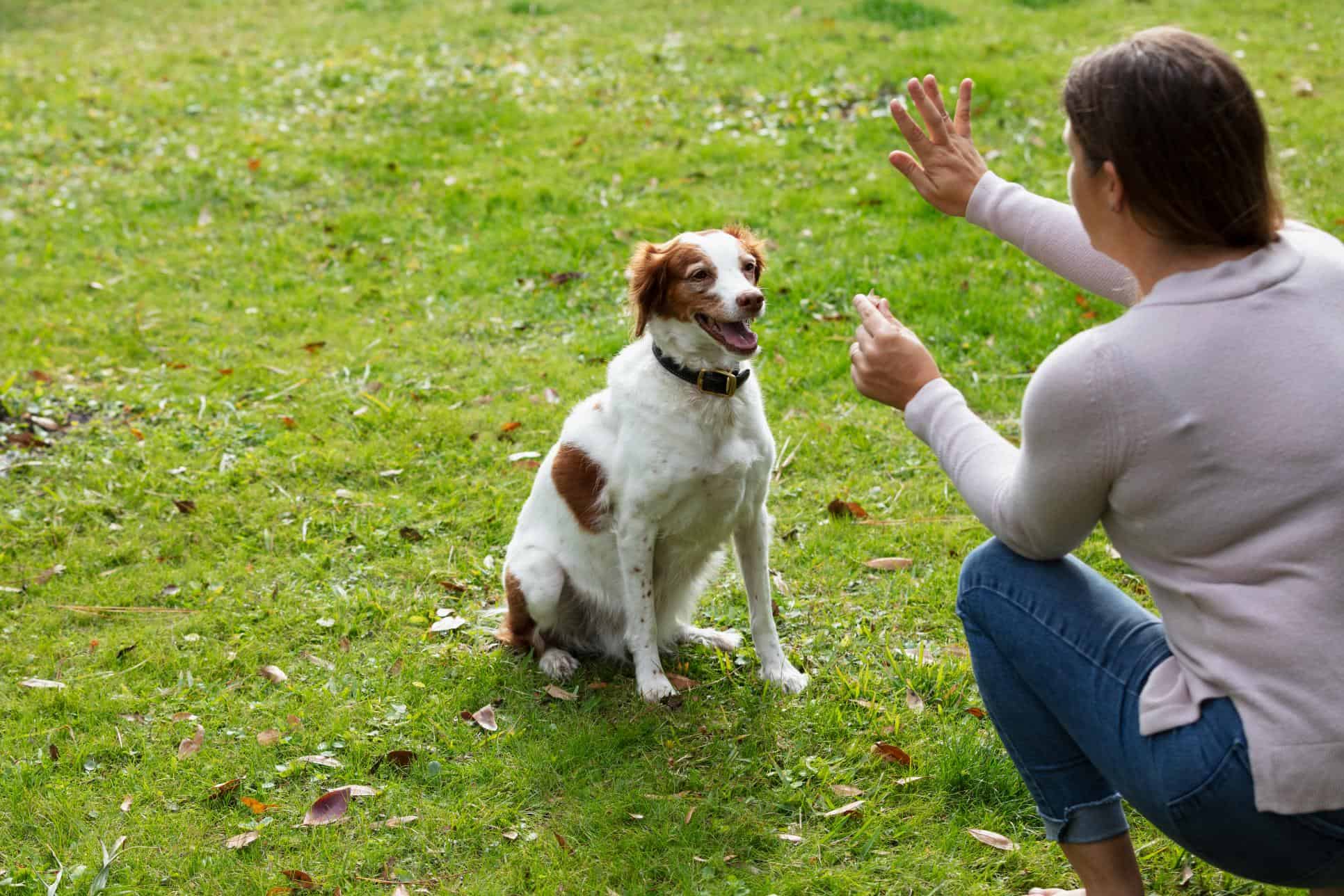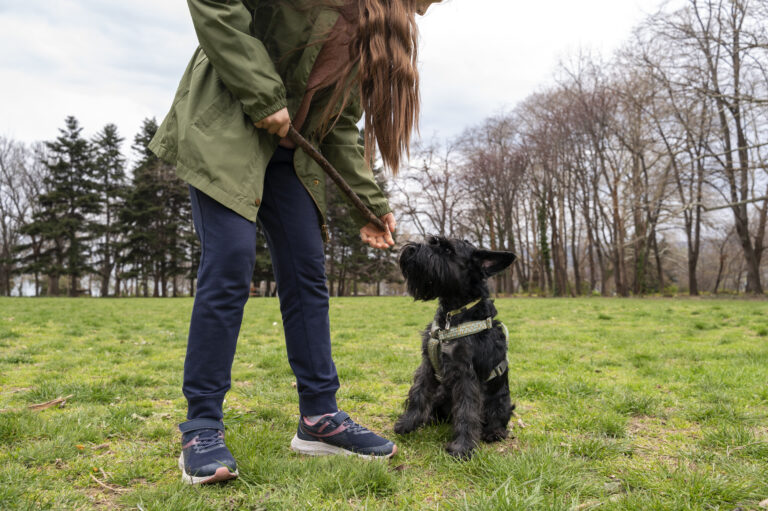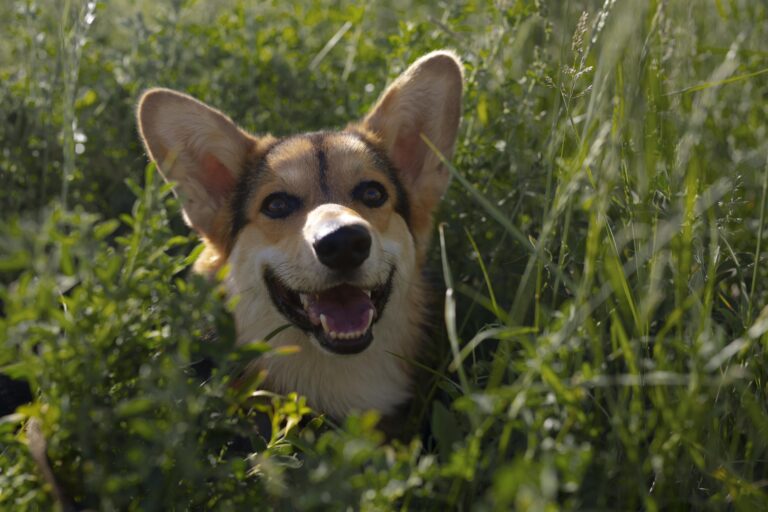The Power Of Positive Reinforcement: Using Spring’s Fresh Energy To Boost Your Dog’s Training
When spring’s vibrant energy flows, it offers a unique ignition for invigorating your dog’s training sessions. This season doesn’t only mark the blossoming of flowers but can also bloom your pet’s learning curve. Harnessing the bright and engaging atmosphere of spring might just be the catalyst for mastering new tricks with positive reinforcement.
Historically, positive reinforcement has revolutionized dog training, fostering happier pets and more meaningful relationships. Spring serves as the perfect backdrop, with studies revealing that dogs trained in engaging environments can learn tasks up to 20% faster. Experts acknowledge that coupling the season’s vigor with consistent rewards can create a thriving training environment.
The Power of Positive Reinforcement in Dog Training
Positive reinforcement is a method that rewards a dog for good behavior. This makes the dog more likely to repeat that behavior. Dogs learn by associating actions with outcomes. When a dog sits on command and gets a treat, it connects sitting with a good result. Over time, these connections help improve listening and skills.
This approach is not new but has gained immense popularity. Trainers often choose it because it’s kind and effective. Dogs respond better to love and rewards rather than punishment. A study shows dogs trained this way tend to be happier and more confident. Using play and treats makes learning fun, which boosts a dog’s enjoyment during training.
Using positive reinforcement can also strengthen the bond between a dog and its owner. Dogs feel appreciated when rewarded, fostering trust. This mutual understanding leads to a more harmonious relationship. It’s like building a friendship based on trust. When you and your dog have a good connection, training becomes smoother and more enjoyable.
Many trainers and pet owners use this method for a variety of tasks. Dogs can learn basic commands like “sit” or advanced tricks such as “fetch.” Consistent rewards help in retaining their training. It’s effective across different breeds and ages. Whether your dog is a puppy or an adult, positive reinforcement offers benefits at every stage.
Positive reinforcement(reward based) is the most powerful tool in dog training.

Historical Context of Positive Reinforcement in Dog Training
The roots of positive reinforcement date back to the early 20th century. Scientists like B.F. Skinner explored how animals learn through rewards. They found that positive reinforcement was effective in shaping behavior. Skinner used this method with pigeons, but it soon gained attention in dog training. This approach has been refined over the years for better results with pets.
Before positive reinforcement gained popularity, trainers relied on harsher methods. These included punishment and fear-based techniques. Many believed these methods were the only way to train dogs. However, animal behaviorists challenged this notion by encouraging reward-based training. As attitudes shifted, more trainers adopted the kinder, more effective method.
During the 1980s, Karen Pryor played a vital role in promoting positive reinforcement. Her book, “Don’t Shoot the Dog,” highlighted the benefits of reward-based training. Pryor’s work inspired many to move away from punishment-focused methods. She introduced techniques such as clicker training, which became widely popular. Educating the public on these methods led to a new era in dog training.
Nowadays, positive reinforcement is a cornerstone in the world of training. Modern trainers prefer this humane approach for its numerous advantages. It helps create a trusting bond between dogs and their handlers. Numerous training programs and schools teach these methods globally. Increasingly, dog owners recognize its value, making it the preferred training choice.
Using Spring’s Fresh Energy in Dog Training
Spring is a time of renewal, making it perfect for refreshing your dog’s training routine. The warmer weather and longer days provide ample opportunities for outdoor activities. When flowers bloom and birds sing, your dog can enjoy and learn in this vibrant atmosphere. The excitement of spring energizes dogs, making them more attentive during training. Harnessing this natural energy can elevate their performance and engagement.
Taking advantage of spring means engaging in activities that support learning. Outdoor games like fetch or agility courses can be integrated into training sessions. This not only makes sessions fun but also enhances physical agility. Fresh air and natural light improve both humans’ and dogs’ moods, leading to more effective training. Meanwhile, distractions like new scents and sounds help with focus exercises.
The season also encourages exploring new environments. Visiting local parks and trails exposes dogs to new challenges, boosting adaptability. These outings can include varied exercises, keeping training diverse. Spring creates ideal opportunities for learning social skills. Dogs can meet new animal friends, which promotes well-rounded behavior.
Incorporating spring’s freshness into training involves being creative. Set realistic goals and tailor exercises to your dog’s unique needs. Utilize elements of the season for motivation, like seasonal toys or rewards. An energized training routine helps build stronger bonds with your pet. As you explore these methods, remember to celebrate small successes along the way.
Strategies to Boost Your Dog’s Training in Spring
One effective strategy is incorporating interactive games into your routine. Games like “hide and seek” not only engage your dog’s mind but also reinforce recall commands. Through these games, dogs learn to rely on their senses and follow cues. Spring’s pleasant weather allows for outdoor play without limitations. These activities keep training fun and varied, which holds your dog’s interest.
Consider setting up an obstacle course in your backyard or local park. This provides physical challenges that promote agility and strength. You can use simple items like cones, hoops, or tunnels to create a dynamic setup. As your dog navigates the course, it improves coordination and obedience. Such exercises help in building confidence and focus, essential for advanced training.
Regular nature walks and hikes are beneficial too. Walking along different terrains offers a variety of sensory experiences. Dogs encounter diverse sights, smells, and sounds, enriching their environment. These walks serve as great opportunities for leash training. They teach dogs to adapt to new situations while honing their behavior.
You can also organize socialization sessions. Invite friends and their pets to join training activities. This introduces your dog to different breeds and personalities in a controlled setting. Under supervision, dogs can interact and learn social cues. These interactions help develop well-behaved, friendly pets.
Spring is a good time to introduce new tools or toys. Items like interactive puzzles or reward-based toys enhance mental stimulation. They require problem-solving, keeping your pet mentally sharp. Changing rewards keeps training sessions exciting and rewarding. With these tools, you ensure that learning continues even when you’re not actively training together.
Benefits of Pairing Positive Reinforcement with Spring’s Energy
Pairing positive reinforcement with the vibrant energy of spring creates a powerful training environment. The season’s lively atmosphere naturally uplifts moods, helping dogs stay attentive and eager. As the weather warms up, pets are more inclined to participate in various outdoor activities. The combination of positivity and nature enhances their learning experience. It makes training sessions more productive and enjoyable for both you and your dog.
Spring’s fresh air and sunlight offer numerous health benefits. Being outdoors increases physical activity, boosting the overall health of your dog. With increased exercise comes improved cardiovascular fitness and muscle strength. This makes dogs more agile and ready to engage in training tasks. When health improves, it leads to better focus during training.
The season encourages exploring and experiencing new environments. This exploration supports mental stimulation, as dogs encounter different sights, smells, and sounds. Such exposure helps in developing adaptive skills and curiosity. Positive reinforcement in these situations encourages flexibility in behavior. It makes dogs more open to trying new things and accepting changes.
Using treats and rewards in sync with spring’s energy can boost morale. The anticipation of a reward keeps dogs motivated and attentive during sessions. The natural excitement of spring enhances this motivation. Reward-based strategies create a sense of achievement, prompting pets to aim for success. The end result is a more balanced and enthusiastic learner.
Training in springtime strengthens bonds. As you train together, the mutual joy and achievement deepen your connection with your dog. The happiness stems not only from achieving goals but from spending quality time outdoors. Dogs appreciate the fun and attention they receive, reinforcing trust and cooperation. In return, you enjoy the satisfaction of a well-behaved, confident companion.
Real-Life Success Stories of Positive Reinforcement in Spring
One inspiring story comes from a dog owner named Emily and her energetic puppy, Max. During the spring, Emily decided to use positive reinforcement to teach Max basic commands. She started with simple commands like “sit” and “stay,” rewarding Max with treats. Within weeks, Max showed incredible progress. The combination of treats and spring’s natural excitement made training sessions enjoyable for both of them.
Another success story involves a rescue dog named Bella, trained by a volunteer named John. Bella had a rough past and was initially fearful of people. John used positive reinforcement to gradually build Bella’s confidence. Springtime provided the perfect backdrop, as the sunny days and outdoor settings helped Bella feel calmer. Over time, Bella transformed into a happy and well-behaved dog, ready for adoption.
In a small town, a community program was launched to train shelter dogs using positive reinforcement. Volunteers worked with dogs in the local park during the spring. The dogs learned new skills like leash walking and socializing with other dogs. The natural setting made the sessions exciting and stress-free. Several dogs successfully found new homes thanks to their improved behavior.
A dog trainer named Lisa took advantage of spring to work with her client’s dog, Rusty. Rusty struggled with leash pulling, making walks difficult. By incorporating positive reinforcement and the fresh energy of spring, Lisa made significant progress. Rusty became more responsive, learning to walk calmly on a leash. The outdoor sessions were key to Rusty’s transformation.
These stories highlight how pairing positive reinforcement with the vibrant energy of spring can lead to remarkable outcomes. From rescue dogs gaining confidence to pets learning new commands, the season’s influence is clear. Positive reinforcement not only improves behavior but also strengthens bonds. For trainers and dog owners, spring presents unique opportunities for successful training.
Frequently Asked Questions
Spring is a wonderful time to improve your dog’s skills with positive reinforcement. Issues regarding harnessing spring’s energy in your training sessions are common. Here are some questions and answers to guide you.
1. Why is spring an ideal time for dog training?
Spring offers longer daylight hours and pleasant weather, perfect for outdoor training. The vibrant atmosphere motivates dogs, making them more responsive to learning and engaging in new activities. This season also allows trainers to introduce new experiences and challenges with natural distractions.
Moreover, the change in environment revitalizes both the trainer and the pet, enhancing the overall training experience. This season’s positivity and excitement can be efficiently harnessed through consistent positive reinforcement, making each session productive.
2. How can positive reinforcement improve my dog’s training outcomes?
Positive reinforcement encourages repetition of good behaviors by rewarding your dog. Dogs quickly learn the behavior linked with positive outcomes, solidifying new commands and tasks in their memory. This method builds confidence and trust between the dog and owner.
Additionally, using rewards such as treats or toys makes the learning process enjoyable for your dog. The bond created through positive interactions fosters an environment where your dog feels safe and eager to learn.
3. What types of rewards are effective in positive reinforcement?
Various rewards can be used effectively, including treats, praise, toys, and playtime. It’s crucial to choose a reward that your dog finds truly motivating, ensuring it associates certain behaviors with high-value outcomes. Different tasks may require different rewards to maintain interest.
Trial and error might be necessary to find what excites your dog the most. Personalizing rewards keeps training engaging, and switching rewards occasionally sustains their enthusiasm and focus.
4. Can all dogs benefit from positive reinforcement in spring?
Yes, all dogs, regardless of breed, age, or temperament, can benefit from this training method. Each dog is unique and might require tailoring of techniques, but the core principles of using rewards to encourage desired behavior remain effective universally.
This approach is adaptable, ensuring even dogs with specific needs or past challenges can progress in their training journey. Consistency and patience open paths to better behavior, using the season’s high spirits.
5. Are there challenges in using positive reinforcement during spring?
While spring provides a lively setting, distractions such as new scents or wildlife may pose challenges. These require dogs to focus amidst new, exciting stimuli, but they also serve as excellent training opportunities for improving attention and self-control.
Training amid distractions can enhance your dog’s patience and listening skills, translating into better results in everyday situations. Embrace the season’s uniqueness and integrate it into your training for a well-rounded experience.
Conclusion
Incorporating spring’s invigorating energy with positive reinforcement creates a transformative training environment for dogs. This synergy enhances motivation and strengthens the bond between a dog and its owner, enriching the learning experience. As the season offers both challenges and opportunities, it unlocks potential for growth and skill development.
Experts acknowledge this approach as a powerful tool in achieving desired behaviors efficiently. By embracing the natural positivity of spring, trainers can create a joyful and productive space for dogs to thrive. The benefits extend beyond training, fostering happier and healthier pets.





